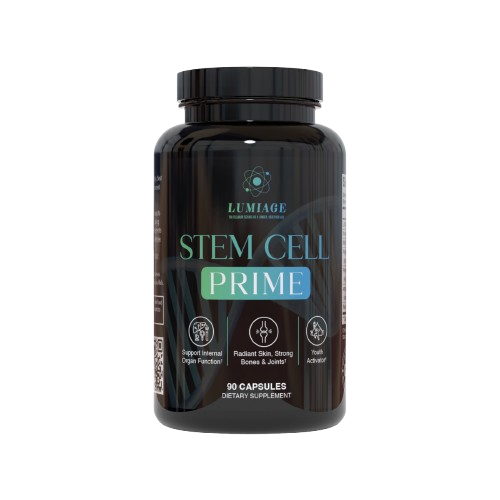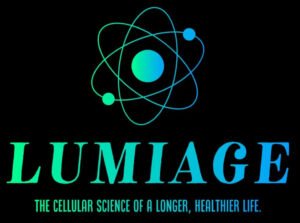NAD
NMN
β-Nicotinamide Mononucleotide (NMN) is a breakthrough longevity compound that fuels your body’s energy at the cellular level. As a direct precursor to NAD⁺, a molecule essential for metabolism, DNA repair, and mitochondrial function, NMN helps revitalize cells from within.
β-Nicotinamide Mononucleotide (NMN) is a breakthrough longevity compound that fuels your body’s energy at the cellular level. As a direct precursor to NAD⁺, a molecule essential for metabolism, DNA repair, and mitochondrial function, NMN helps revitalize cells from within.
β-Nicotinamide Mononucleotide (NMN)
β-Nicotinamide Mononucleotide (NMN) is a breakthrough longevity compound that fuels your body’s energy at the cellular level. As a direct precursor to NAD⁺, a molecule essential for metabolism, DNA repair, and mitochondrial function, NMN helps revitalize cells from within.
The Molecule of Cellular Vitality
Nicotinamide adenine dinucleotide (NAD⁺) is a vital molecule found in every living cell. It functions as an essential cofactor supporting enzymes that drive fundamental biological processes necessary for life.
First identified in 1906, NAD⁺ has become a focal point of modern scientific research, which continues to reveal its critical role in maintaining the health and function of our cells, tissues, and entire body.
However, as we age, our cellular NAD⁺ levels naturally decline, leading to impaired cellular function. This reduction is closely associated with a range of age-related conditions, including cognitive decline, metabolic disorders, cancer, sarcopenia (loss of muscle mass and strength), and general frailty. Encouragingly, studies suggest that restoring NAD⁺ levels may slow, or even partially reverse, many of these age-associated effects.
Understanding what NAD⁺ is, how it’s produced, and how our cells utilize it is key to uncovering its powerful influence on healthy aging—and to exploring effective ways to support and restore optimal NAD⁺ function within the body

How Do Cells Produce NAD⁺?
NAD⁺ plays a vital role in numerous biological processes and is in constant demand by the body. To maintain stable intracellular levels, cells are continually synthesizing, utilizing, and recycling NAD⁺ through several interconnected pathways.
Some cells—particularly those in the liver—can produce NAD⁺ de novo (“from scratch”) using dietary nutrients. This process relies on amino acids such as L-tryptophan and vitamin precursors like nicotinic acid (NA).
However, most other cells lack the full set of enzymes required to synthesize NAD⁺ directly from tryptophan. Instead, they depend on a salvage or recycling pathway, which recovers NAD⁺ from its by-product, nicotinamide (NAM)—a compound generated when enzymes use NAD⁺ during cellular reactions.
In this pathway, NAM is first converted into nicotinamide mononucleotide (NMN) by the enzyme NAMPT, and then NMN is transformed into NAD⁺. NAD⁺ can also be produced from nicotinamide riboside (NR), which serves as another precursor to NMN.
In summary, while the liver can create NAD⁺ from dietary sources, most tissues rely on recycling pathways to sustain adequate NAD⁺ levels essential for energy production, DNA repair, and overall cellular health.
What Enzymes Consume NAD⁺?
NAD⁺ is continuously used and replenished within the body. Its turnover is primarily driven by three major classes of NAD⁺-consuming enzymes: sirtuins, PARPs, and NAD⁺ glycohydrolases (also known as NADases, including CD38, CD157, and SARM1). These enzymes play essential roles in metabolism, DNA repair, immune regulation, and aging.
Sirtuins
In research on aging and metabolism, sirtuins have emerged as some of the most significant NAD⁺-dependent enzymes. They are key regulators of metabolic activity, stress resistance, and cellular longevity. Because sirtuins require NAD⁺ to function, maintaining adequate NAD⁺ levels is critical for supporting healthy aging and optimal cellular performance.
PARPs
The poly(ADP-ribose) polymerases (PARPs) are a family of 17 proteins involved in DNA repair and genomic stability. During these processes, PARPs cleave NAD⁺ to generate nicotinamide (NAM) and ADP-ribose. Excessive activation of PARPs—particularly PARP1—can deplete cellular NAD⁺ reserves, which may contribute to age-related NAD⁺ decline. Because of this, PARP inhibition has become a promising strategy in aging and longevity research, although further studies are needed to fully clarify their role.
NADases (CD38, CD157, and SARM1)
CD38 and CD157 are multifunctional enzymes located on the cell surface that regulate important processes such as immune cell signaling, metabolism, and survival. Beyond NAD⁺,
CD38 can also consume nicotinamide mononucleotide (NMN), while CD157 utilizes nicotinamide riboside (NR) as an alternative substrate. Both enzymes are known to increase in expression with age, suggesting a link to the age-related decline in NAD⁺ and the progression of inflammatory and degenerative conditions such as arthritis and cancer.
SARM1, a more recently identified member of the NADase family, is primarily active in neurons, where it drives axonal degeneration following nerve injury. It also influences immune cell function and inflammatory signaling. Because of its role in neurodegeneration, SARM1 is being actively explored as a potential therapeutic target for preventing or treating neurodegenerative diseases and traumatic brain injury.
How Is NAD⁺ Connected to Aging?
As we age, NAD⁺ levels naturally decline, leading to widespread effects on cellular health and function. This reduction disrupts the balance between NAD⁺ production and consumption, as the enzymes responsible for its synthesis and degradation become altered with age.
NAD⁺ plays a central role in regulating many processes that both influence and reflect aging — including metabolic efficiency, DNA repair, genomic stability, inflammation control, cellular senescence, and neuronal function.
A sustained decline in NAD⁺ levels has been strongly associated with the onset and progression of numerous age-related diseases, such as atherosclerosis, arthritis, hypertension, diabetes, cancer, and cognitive decline.
By maintaining or restoring optimal NAD⁺ levels, it may be possible to support healthier aging and reduce vulnerability to degenerative conditions linked to NAD⁺ depletion.
How Can NAD⁺ Levels Be Restored?
NAD⁺ levels can be replenished through several approaches that enhance its production, recycling, or conservation within the body. One of the most effective methods involves supplementing with NAD⁺ precursors, such as nicotinamide mononucleotide (NMN), nicotinamide riboside (NR), and nicotinamide (NAM). These compounds serve as building blocks that cells use to synthesize NAD⁺.
NAD⁺ levels can also be elevated by activating enzymes involved in NAD⁺ biosynthesis or by inhibiting enzymes that degrade NAD⁺, such as CD38 and CD157. Research suggests that small-molecule inhibitors targeting these enzymes may improve the efficiency of NAD⁺ restoration, especially when used alongside NAD⁺ precursors.
In addition to supplementation, several lifestyle interventions naturally support higher NAD⁺ levels. These include:
- Regular physical activity
- Caloric moderation and a balanced diet
- Consistent sleep patterns and circadian rhythm alignment
The circadian rhythm, governed by the brain’s suprachiasmatic nucleus (SCN) in the hypothalamus, regulates the body’s sleep–wake cycle and numerous metabolic functions. Maintaining a stable daily routine—consistent sleep, wake, and meal times—helps optimize NAD⁺ metabolism and overall cellular health.
Together, these approaches not only help rebuild NAD⁺ stores but also promote broad health benefits, including improved tissue and organ function, enhanced metabolic balance, reduced inflammation, and protection against cognitive decline. By supporting healthy NAD⁺ levels, these strategies may collectively contribute to an extended healthspan and potentially a longer, more vibrant life.
FAQ
No. That’s the core of NAD vs NADH: NAD+ accepts electrons to become NADH; NADH donates them to help make ATP.
No. Direct oral NAD+ has poor absorption. Human studies show that NR (nicotinamide riboside) and NMN (nicotinamide mononucleotide) are the most effective options for raising blood NAD+ levels.
Maintain regular exercise, steady sleep and circadian habits, eat a B3-rich diet, and consider clinically studied precursors such as NR or NMN.
At standard vitamin doses, serious side effects are uncommon. Niacin may cause a flush at higher doses, and very high chronic nicotinamide could counteract sirtuin-related benefits. Always consult a clinician if you have medical conditions or take medications.
DISCLAIMER:
At Lumiage, our mission is to educate about the potential of stem cells and their vital role in the body’s natural repair system. The information shared on this website—including articles, educational materials, videos, testimonials, and other content—is intended solely for informational and educational purposes.
Our core belief is simple: Lumiage® supports the body’s natural renewal process by promoting an increase in circulating stem cells. We invite you to ask yourself, “What could be possible if your body had more active stem cells in circulation?”
Our products are supported by scientific research, and the increase in circulating stem cells is documented through clinical trials and ongoing studies. We reference peer-reviewed research to illustrate the broader, science-based effects of stem cells within the body. All research cited is derived from studies conducted by Lumiage and/or independent laboratories to ensure scientific integrity and reliability.
Please note that the information provided does not constitute medical advice and should not be used to diagnose, treat, or prevent any medical condition. Individual results may vary, and the testimonials or experiences shared are personal to each individual. Always consult your healthcare professional before starting any new supplement or wellness regimen.
These statements have not been evaluated by the U.S. Food and Drug Administration (FDA). Lumiage® products are not intended to diagnose, treat, cure, or prevent any disease
Get in Touch Now

Cracking the Stem Cell Code

“Our approach harnesses advanced stem cell science to naturally support the body’s repair and regeneration processes. By promoting circulating stem cells, these supplements enhance vitality, improve wellness, and help maintain optimal health, empowering individuals to live with energy, resilience, and overall life-long vitality at any age.”


